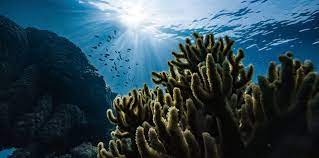Ballast Water Management Systems (BWMS) are crucial for controlling the spread of invasive species in aquatic environments. To ensure these systems function correctly, accurate sensor calibration is essential. This article delves into the importance of BWMS sensor calibration, the process involved, and best practices for maintaining accuracy and compliance.
What is BWMS Sensor Calibration?
BWMS sensor calibration is the process of adjusting and fine-tuning sensors within a ballast water management system to ensure they provide accurate and reliable measurements. Sensors in a BWMS measure various parameters such as salinity, temperature, and UV intensity, which are critical for the effective treatment of ballast water.
Why is Calibration Important?
- Accuracy of Measurements: Proper calibration ensures that the data collected by sensors is accurate, which is crucial for the effective treatment of ballast water and compliance with regulations.
- Regulatory Compliance: Accurate sensor readings help ensure that the BWMS meets international and local regulatory standards, preventing legal issues and fines.
- System Efficiency: Regular calibration helps maintain the overall efficiency of the BWMS, ensuring optimal performance and reducing the risk of system failure.
The Calibration Process
1. Preparation
Before beginning the calibration process, gather all necessary equipment, including calibration standards and reference materials. Ensure that the BWMS is in good working condition and that the sensors to be calibrated are clean and free from any obstructions or contaminants.
2. Calibration of Individual Sensors
Each type of sensor in the BWMS requires a specific calibration procedure:
- Salinity Sensors: Use standard saline solutions to calibrate salinity sensors. Follow manufacturer guidelines to adjust the sensor readings to match the known concentrations of the saline solutions.
- Temperature Sensors: Calibrate temperature sensors using a reference thermometer. Adjust the sensor readings to match the reference temperatures at various points.
- UV Sensors: For UV sensors, use a calibrated UV light source to ensure that the sensor readings correspond accurately to the intensity of the UV light.
3. Verification
After calibration, verify the accuracy of the sensors by testing them under normal operating conditions. Compare the sensor readings with known reference values to ensure they are accurate.
4. Documentation
Document the calibration process, including the date, equipment used, and any adjustments made. This documentation is essential for regulatory compliance and future reference.
Best Practices for BWMS Sensor Calibration
1. Regular Calibration Schedule
Implement a regular calibration schedule based on the manufacturer’s recommendations and operational requirements. Frequent calibration helps maintain accuracy and prevent potential issues.
2. Use of Certified Calibration Standards
Always use certified calibration standards and reference materials to ensure the accuracy and reliability of the calibration process.
3. Training and Expertise
Ensure that personnel responsible for calibration are properly trained and experienced. Proper training helps prevent errors and ensures the calibration process is performed correctly.
4. Maintenance and Inspection
Regularly inspect and maintain sensors and other components of the BWMS. Proper maintenance helps prevent sensor drift and ensures consistent performance.
5. Compliance with Regulations
Stay updated with international and local regulations regarding BWMS sensor calibration. Ensure that the calibration procedures and documentation meet regulatory requirements to avoid penalties.
Conclusion
BWMS sensor calibration is a critical aspect of maintaining the effectiveness and compliance of ballast water management systems. By following best practices and ensuring accurate calibration, vessel operators can ensure that their BWMS functions optimally, meets regulatory standards, and contributes to the protection of aquatic environments. Regular calibration and proper maintenance of sensors are essential for achieving accurate measurements and ensuring the successful management of ballast water.



